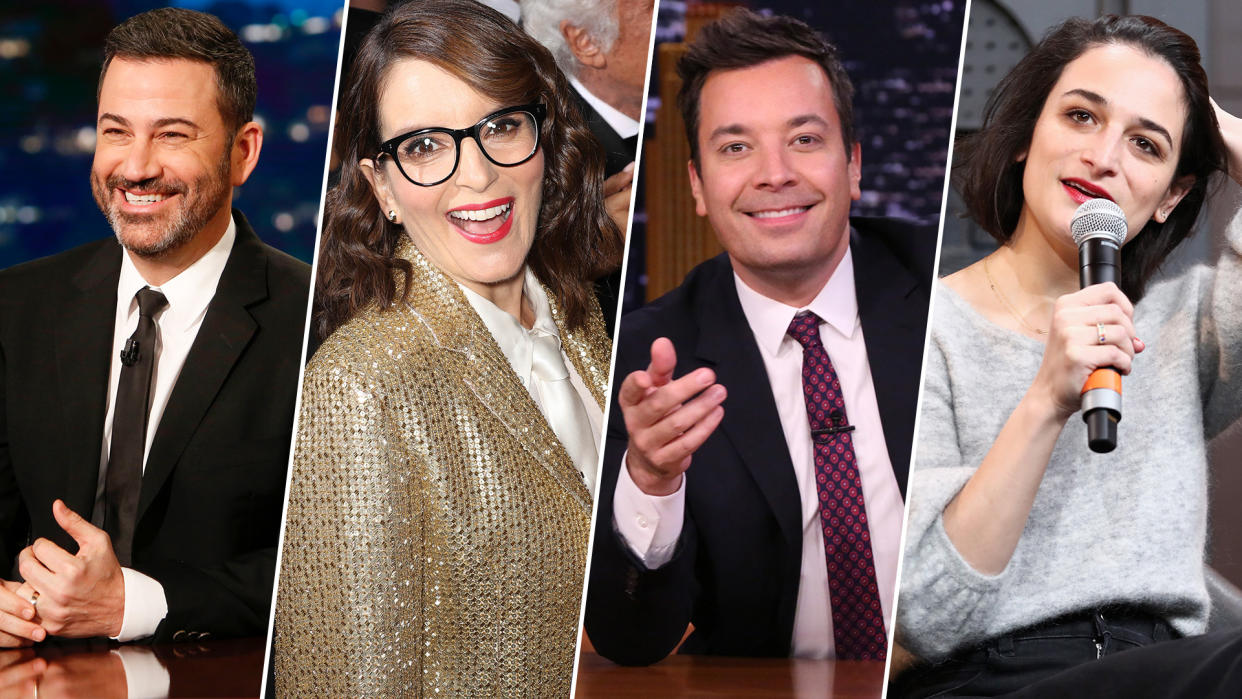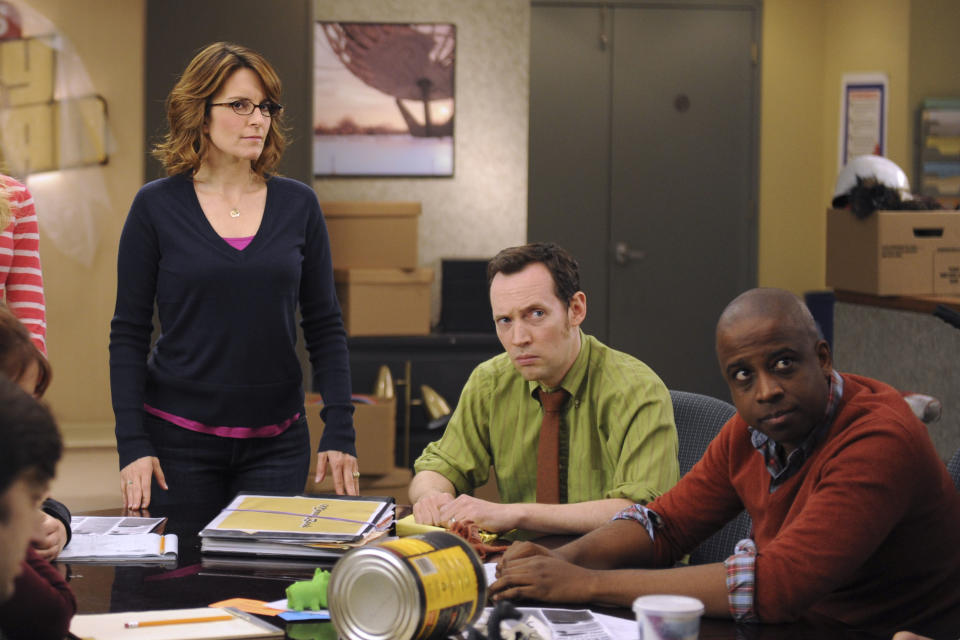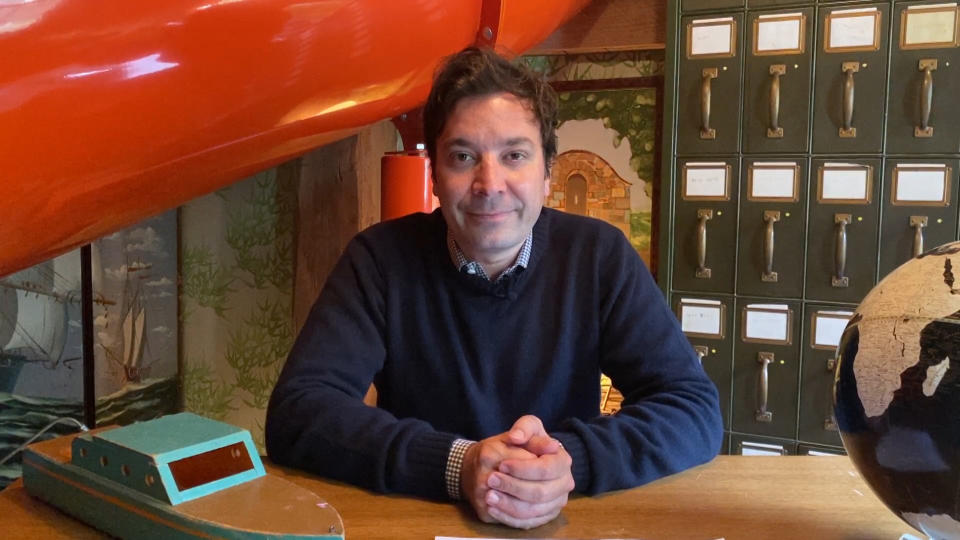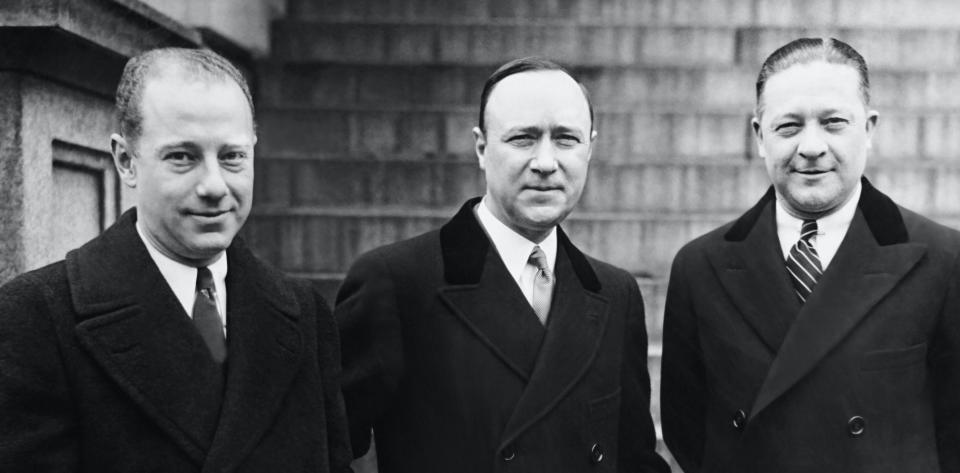Hollywood's 'bottomless pit' of blackface: Why it has taken so long for white creators and comedians to apologize

Tina Fey and Jimmy Kimmel are very different comedians, but they’ve both recently had to apologize for committing the same comic offense. Last week, the 30 Rock creator and the Jimmy Kimmel Live! star issued public statements within a day of each other in which they acknowledged using blackface at different points in their careers. Kimmel wore blackface in the 1990s and 2000s when he imitated African-American NBA legend Karl Malone on his Comedy Central series, The Man Show. “I apologize to those who were genuinely hurt or offended by the makeup I wore or the words I spoke,” Kimmel said in his statement. “I never considered that this might be seen as anything other than an imitation of a fellow human being, one that had no more to do with Karl’s skin color than it did his bulging muscles and bald head.”
Fey, meanwhile, incorporated blackface into storylines featured on four different episodes of 30 Rock, which enjoyed a seven-season run on NBC from 2006 to 2013. “I understand now that ‘intent' is not a free pass for white people to use these images,” she wrote in her statement, which also requested that the episodes in question be removed from streaming and on-demand services. “I apologize for pain they have caused.”

Mia Moody-Ramirez — chair of Baylor University’s Department of Journalism, Public Relations and New Media, and co-author of the book From Blackface to Black Twitter: Reflections on Black Humor, Race, Politics, & Gender — listened to both apologies and noticed some subtle but nonetheless striking differences between them. “Jimmy Kimmel apologized, but only to those people who were genuinely hurt,” she explains. “It wasn’t a general apology. I’ve done a lot of research on apologies and image repairs, and when you’re only apologizing to a segment of the population — only to those people who are hurt — then that’s not considered a good apology.”
Kimmel also notably used his apology to address his persistent critics in the right-wing media. “I won’t be bullied into silence by those who feign outrage to advance their oppressive and genuinely racist agenda,” he wrote, clearly alluding to individuals like Donald Trump Jr., who promptly criticized the host’s statement on Twitter. That score-settling approach hit a false note with Moody-Ramirez. “That’s not cool,” she says. “He should just apologize in general.”

Fey’s apology, on the other hand, struck Moody-Ramirez as being more sincere, in part because it signals a clear shift in her thinking. “For many years, she’s defended the race-related comedy in her shows,” Moody-Ramirez says. “There wasn’t just blackface on 30 Rock; there were also some Black stereotypes that were problematic. But she’s looked at her writing and her shows, and she knows that a lot of that is problematic now. Previously, she looked at intent and thought, ‘I’m not racist, my intent is not racial, and since my intent is not to hurt people, then it’s OK.’ Now she’s knows that intent is not a free pass, and those images are hurtful no matter what your intent is. She’s decided to pull some of these episodes, and has apologized profusely, so she’s very sincere.”
The art of the apology matters more than ever now that an increasing number of white comedians and creators are being made to reckon with racially insensitive material from their pasts. The Black Lives Matter protests occurring across the country since the death of George Floyd in May have brought renewed attention to the deep inequalities that exist across the American media, from the lack of diversity in newsrooms and major magazines to streaming services that program movies and TV shows containing racist imagery.
Within the world of television and feature film comedy, blackface is an endemic problem that has endured even as society at large increasingly recognizes it as offensive. In addition to Kimmel and Fey, prominent comedians, writers and producers like Jimmy Fallon and Matt Lucas and David Walliams have recently apologized for appearing in blackface on shows like Saturday Night Live and Little Britain. Meanwhile, the creators of such series as Scrubs, Community and The Office have followed Fey’s example with 30 Rock and removed scenes or full episodes featuring blackface from streaming services.

The sheer number of recent apologies would seem to mark a tipping point, but observers note that action is ultimately going to matter more than words. “I do imagine there’s sincerity there — it’s just really hard to gauge because there are so many apologies,” remarks Jirard, a Dallas-based filmmaker and photographer. “Every day I see an apology about some racial transgression. I feel like if there’s something more you can do, do it. That’s what Tina Fey did by actually having them remove episodes of 30 Rock — that’s a bold step. It’s one thing to say something and be apologetic; it’s another thing if you can actually put some action behind it.”
Yahoo Entertainment previewed two work-in-progress sequences from Jirard’s current project, Colour Treatment, a documentary series that explores the history of Black representation in film and television. One of the clips looks at the evolution of cinematic depictions of Black slavery, spanning Birth of a Nation to 12 Years a Slave. The other is a bracing five-minute montage presenting the long history of blackface on the American stage and screen, from the silent era to the social media era. “It’s like a bottomless pit,” the director says of blackface’s omnipresence in the popular culture of yesterday and, for that matter, today. “Blackface minstrelsy is the father of all popular entertainment right now; you’d be hard-pressed to find any popular entertainment that can’t be traced back to it.”
Jirard has been using those sequences to raise the funds to complete Colour Treatment, which he hopes to produce for a streaming service and then make available online as a free educational resource. “Because blackface is one of those things we don’t like to talk about, we definitely don’t teach about it. We don’t teach what those stereotypes mean and how they affect Black people. When it isn’t taught, people don’t feel the responsibility to know anymore. That’s the disconnect: When people write material that includes blackface, they may not fully understand the repercussions of it. But if they do understand it and still put it out there, then they can answer when they’re questioned about it, because it is offensive.”
One place where the history of racism in American popular entertainment is taught is the Jim Crow Museum of Racist Memorabilia at Michigan’s Ferris State University. Founded by David Pilgrim, the university’s vice president for diversity and inclusion, the museum houses the nation’s largest collection of racist artifacts drawn from the Reconstruction period up to the civil rights era. In an email interview with Yahoo Entertainment, Pilgrim describes the overwhelming emotion most museum visitors experience to be “a kind of reflected sadness” when directly confronted with a century’s worth of blackface imagery. (Due to the coronavirus pandemic, the current exhibition space has been closed to the public since March; Pilgrim is currently raising funds to build a larger museum.)
“From its origins in the 1830s, blackface minstrelsy was tied to fun, fascination and fear — all at the expense of Black people,” he explains. “It reached its zenith between the 1850s, when enslavement was being forcefully challenged, up to the period of Reconstruction in the 1870s, when whites feared that Black people would dominate America and punish the people who had enslaved them.”
With the rise of the mass media in the 20th century, blackface quickly took root on movie screens, followed later by television. Jirard’s Colour Treatment incorporates numerous clips from the comedies and musicals of the 1920s, ’30s and ’40s, where blackface is presented with a now-disturbing nonchalance. “It was a part of life,” the director says matter-of-factly, adding that things started to change with the advent of the Civil Rights movement in the 1950s and 1960s. “Civil rights happens, and we become way more vocal about the ways we’re being disenfranchised and dehumanized. So, of course, representation in the media becomes a very big issue.” Pilgrim also credits the civil rights movement with bringing “organized resistance to many forms of anti-Black oppressions, including blackface performances.”
At the same time, both note that blackface never went away, instead finding a new foothold as shock value. “In the 1970s, it became a tool of how you’re taking it to the limit,” Jirard says. Pilgrim similarly points to Dan Aykroyd in 1983’s Trading Places, C. Thomas Howell in 1986’s Soul Man and Ted Danson at an infamous 1993 Friars Club performance as latter-day examples of performers knowingly employing blackface to provoke a laugh — or even just a gasp — from audiences. Even a popular sitcom like The Golden Girls used blackface as a punch line in a 1988 episode that has since been removed from Hulu. “As long as there is fun, fascination and fear attached to white people painting their faces black, it will exist,” Pilgrim says.

The contemporary instances of blackface that comedians are currently apologizing for have, broadly speaking, fallen into three categories. Kimmel and Fallon used it as part of their impressions of Karl Malone and Chris Rock, respectively, which Moody-Ramirez says represents a slight distinction from traditional blackface. “They were mimicking a person,” she explains, noting that Fallon’s former Saturday Night Live co-star Fred Armisen — who has Venezuelan, German and Korean heritage — often played President Barack Obama during his tenure on the series. “I think that’s probably why they thought it was OK at the time, because they were impersonations of Black celebrities versus traditional blackface, which is stereotypes of black people with large lips and large eyes. However, in the climate that we’re in now, it would be offensive to do any type of darkening of your face.”
Prior to his Man Show appearances as Malone, Kimmel performed his impressions of the NBA star and other Black celebrities like Snoop Dogg on Los Angeles’s KROQ radio in the 1990s. During that same decade, and for years afterward, The Simpsons cast member Hank Azaria provided the voices of such diverse Springfield citizens as Apu and Carl Carlson. Other animated series followed a similar model of casting white actors as nonwhite characters, from Mike Henry as Cleveland Brown on Fox’s Family Guy and The Cleveland Show to Jenny Slate as Missy Foreman-Green on Netflix’s Big Mouth and Kristen Bell as Molly Tillerman on Apple TV+’s Central Park.

In the past few weeks, though, all of those actors have stepped away from those roles, announcing their decision on social media. “Persons of color should play characters of color,” Henry wrote on Twitter (The Wire star Wendell Pierce has since launched a campaign to replace him), while Bell and Slate both posted apologies on Instagram. And even though Azaria had already stepped away from voicing Apu earlier this year, The Simpsons producers have now said that white actors will no longer voice any of Springfield’s nonwhite residents going forward.
Jirard describes the casting choices on animated shows like Big Mouth as “a type of spoken blackface” and dates it back to the long-running radio comedy Amos ’n’ Andy. Created by white performers Freeman Gosden and Charles Correll — who had a background in minstrel shows and were photographed in blackface for publicity shoots — the series was broadcast from 1928 to 1960. (A television spinoff aired on CBS from 1951 to 1953 and featured a largely Black cast, even as Godsen and Correll continued to perform the characters on the radio.) “It’s performing blackface without actually doing the paint,” Jirard says of the example set by Amos ’n’ Andy.

For the most part, Jirard believes that modern-day examples of “spoken blackface” stem from the larger problem of a lack of diversity in writers’ rooms and casting sessions within Hollywood. “It speaks a lot to the fact that when these creators create a character of a particular race, their first mindset isn’t to try to find someone of that same race to priority the character. That’s part of what’s so frustrating about blackface in general. When there’s no voice in the room that can say, ‘This is offensive,’ then you’ll have these problems.”
Some comedians have tried to defuse controversy ahead of time by making the offensiveness of blackface part of the joke. In one of the 30 Rock episodes that has since been removed from streaming services, vain actress Jenna Maroney (Jane Krakowski) disguises herself as a black man while her co-star Tracy Jordan (Tracy Morgan) dressed up as a white woman as part of an experiment to see which of them is treated worse by society. “You realize this is incredibly offensive,” Liz Lemon (Fey) tells Jenna. “And you realize blackface makeup reignites racial stereotypes African Americans have worked for years to overcome.” Jirard says that exchange suggests that Fey and her writers at least understood the risks they were taking in pursuit of laughs. “It does kind of lead to the notion that maybe there was a discussion or maybe they understood what it actually meant, and decided that the joke was worth it.”
It’s probably no coincidence that that particular episode of 30 Rock aired in November 2008, four months after Ben Stiller’s big-budget comedy Tropic Thunder also took a meta-approach to blackface. Conceived as a take-no-prisoners satire of Hollywood egoism run rampant, the film features Robert Downey Jr. as a Method actor so extreme that he has “pigmentation alteration” surgery in order to play a Black soldier in a Vietnam war movie. Downey’s performance was praised by critics at the time, and he even received an Oscar nomination for Best Supporting Actor. But Tropic Thunder also ignited a debate that continues to this day about whether Downey and Stiller’s intent to satirize movie star excess justified their use of blackface. When this author interviewed Downey’s Black co-star Brandon T. Jackson for Giant magazine in 2008, he admitted to feeling ambivalence about being part of a controversial punch line.
“I’m the only real black dude in the movie, so I tried to express the situation as much as I could. I think Robert felt my frustration and egged me on to make it more real. There’s a scene where he goes ‘Are we cool?’ and I say, ‘Not really!’ That was all improv. I wanted to let the audience knowing Robert know that this movie is just playing around, and we’re going to laugh together. But it ain’t cool.”
Downey remains one of the few actors or comedians who has yet to apologize for wearing blackface; as recently as January, the actor stood by Tropic Thunder and his performance when interviewed on Joe Rogan’s podcast. “Ninety percent of my black friends were like, ‘Dude, that was great,’” he said at the time. Moody-Ramirez, for one, thinks that Downey may feel compelled to issue a belated apology in the months ahead. “Any type of blackface is going to be criticized just because of the climate,” she explains. “At first, he didn’t think he needed to apologize, because the movie was critically acclaimed and people liked it. But now there’s a lot of negativity surrounding it, so he might consider going back and apologizing. That’s what’s hard about the climate we’re in: What was acceptable in the 1990s and the early 2000s, we’re now looking at through a different lens, and it’s not acceptable anymore. The only thing you can do is apologize for it, because you can’t erase it — it’s already been done.”

That latter point is why some on social media are arguing that merely removing episodes of The Golden Girls and 30 Rock isn’t helpful to the current moment. Moody-Ramirez says that she personally would rather see Fey’s series remain intact, with a disclaimer around the specific episodes featuring blackface — an approach akin to HBO Max’s treatment of Gone With the Wind. “People need to know what was going on during this time in history. When I saw that those episodes had been removed, I immediately wanted to know what was in them, and I think other people will feel that way. It would be valuable to consider having a disclaimer versus removing them. It will be up to parents to screen these shows for their children, but I think adults are certainly able to make that decision about whether they want to watch that content or not.”
Having immersed himself in the history of blackface for Colour Treatment, Jirard doesn’t see it going away after the current moment of atonement has passed. As a filmmaker, he says there’s one fundamental question comedians and writers who feel tempted to use blackface in pursuit of a joke will have to ask themselves going forward. “Comedy is meant to push boundaries; that’s what it does intrinsically. You have to ask yourself why this is something that you want to do. What are you actually saying with this thing that you know will offend people? Because at the end of the day, even if you’re doing it for social commentary, there are people that are going to be offended because of the nature of what blackface is and how it relates to an entire race of people.
“Even if there wasn’t backlash initially, it’s out there forever and you’re going to have to deal with it at one time or another,” he continues. “You will be held accountable for it, and you have to decide if you feel the joke is good enough for the backlash that you’ll be receiving. Because it’s going to happen. And when it does, actually listen to what people are offended by and why. This thing has a rich history of dehumanization, and we’re dealing with that history now. We’re still trying to exorcize the demons of black representation that have existed since the dawn of popular culture.”
Read more from Yahoo Entertainment:

 Yahoo Movies
Yahoo Movies 

